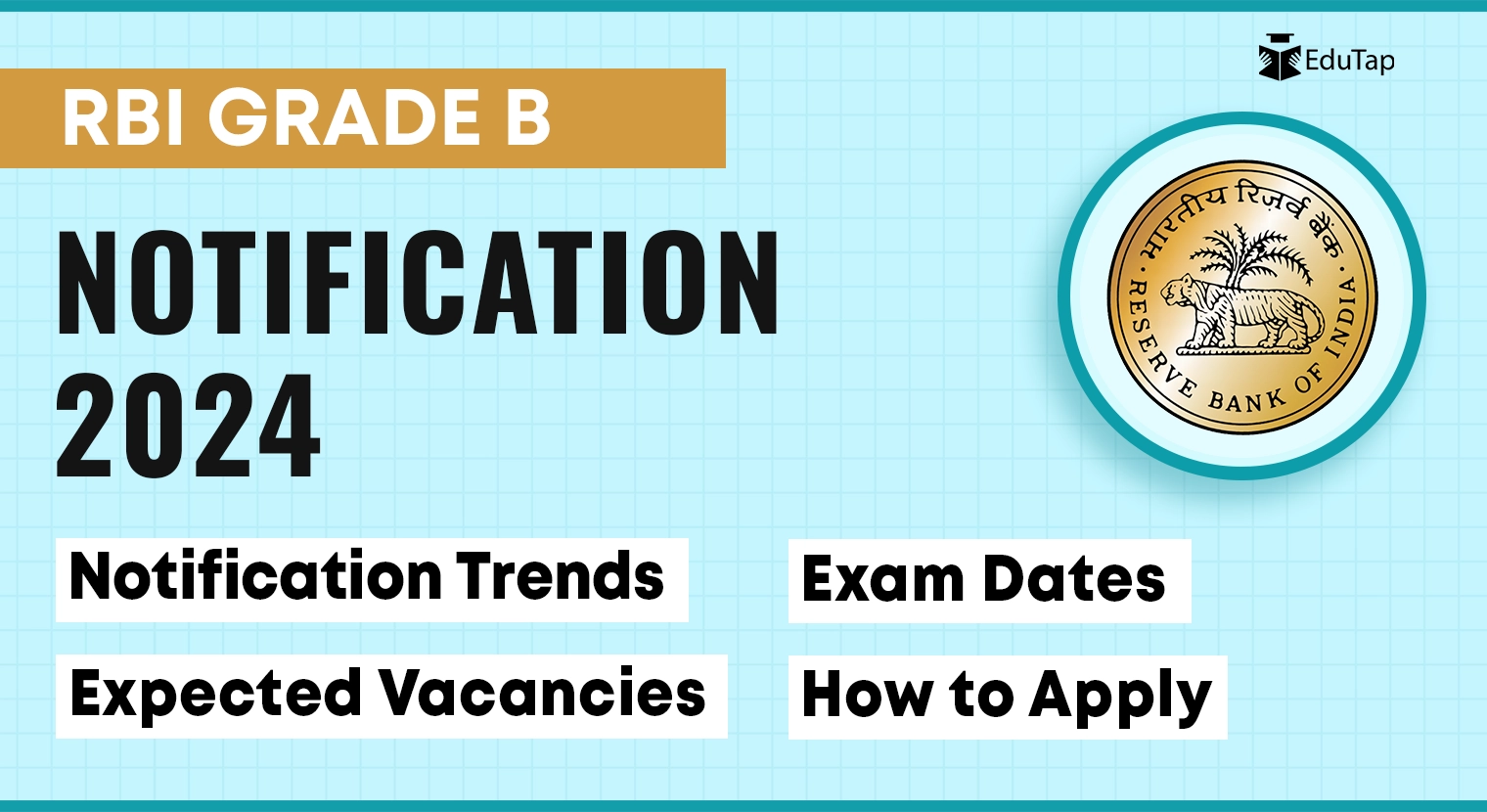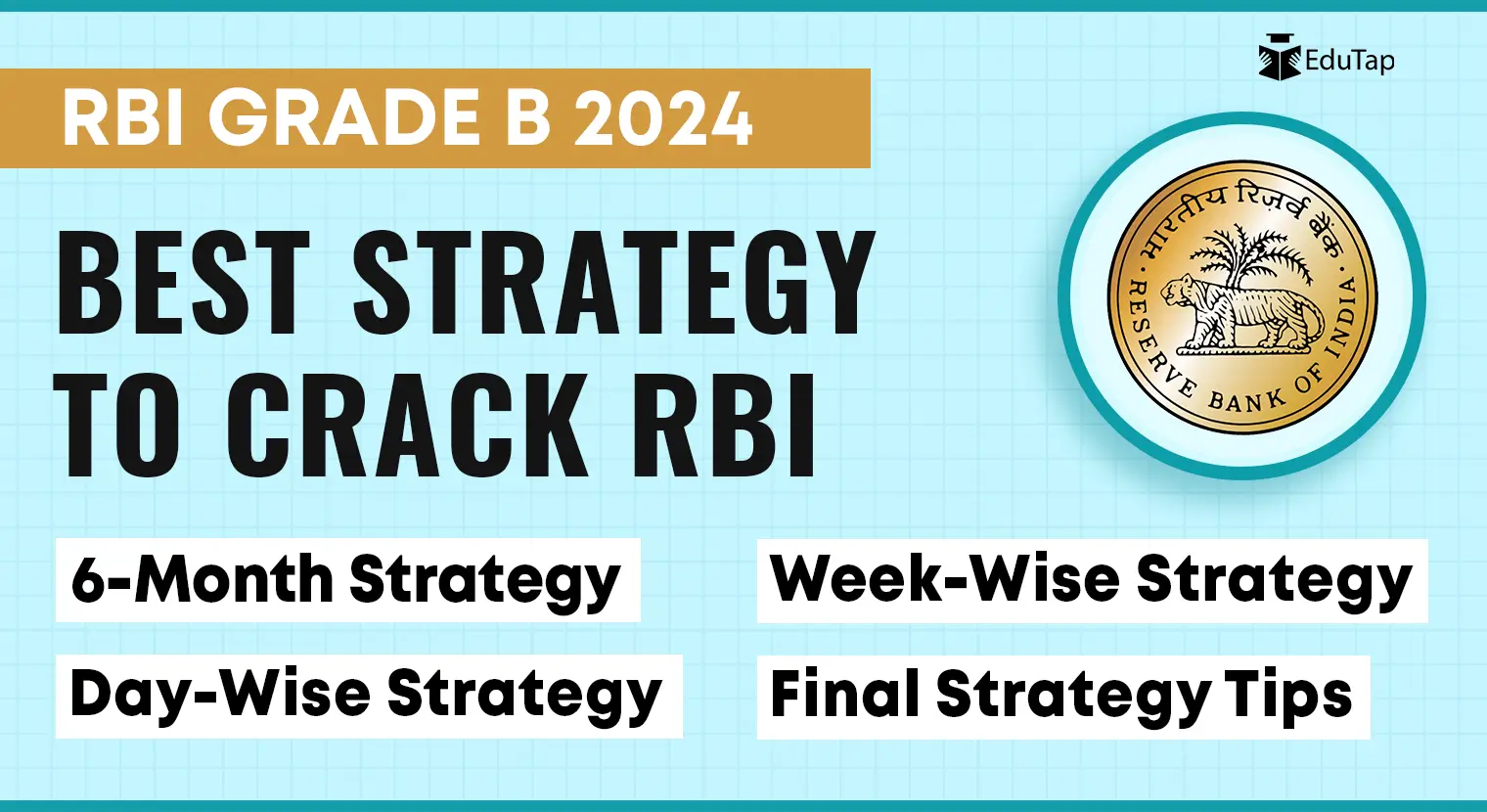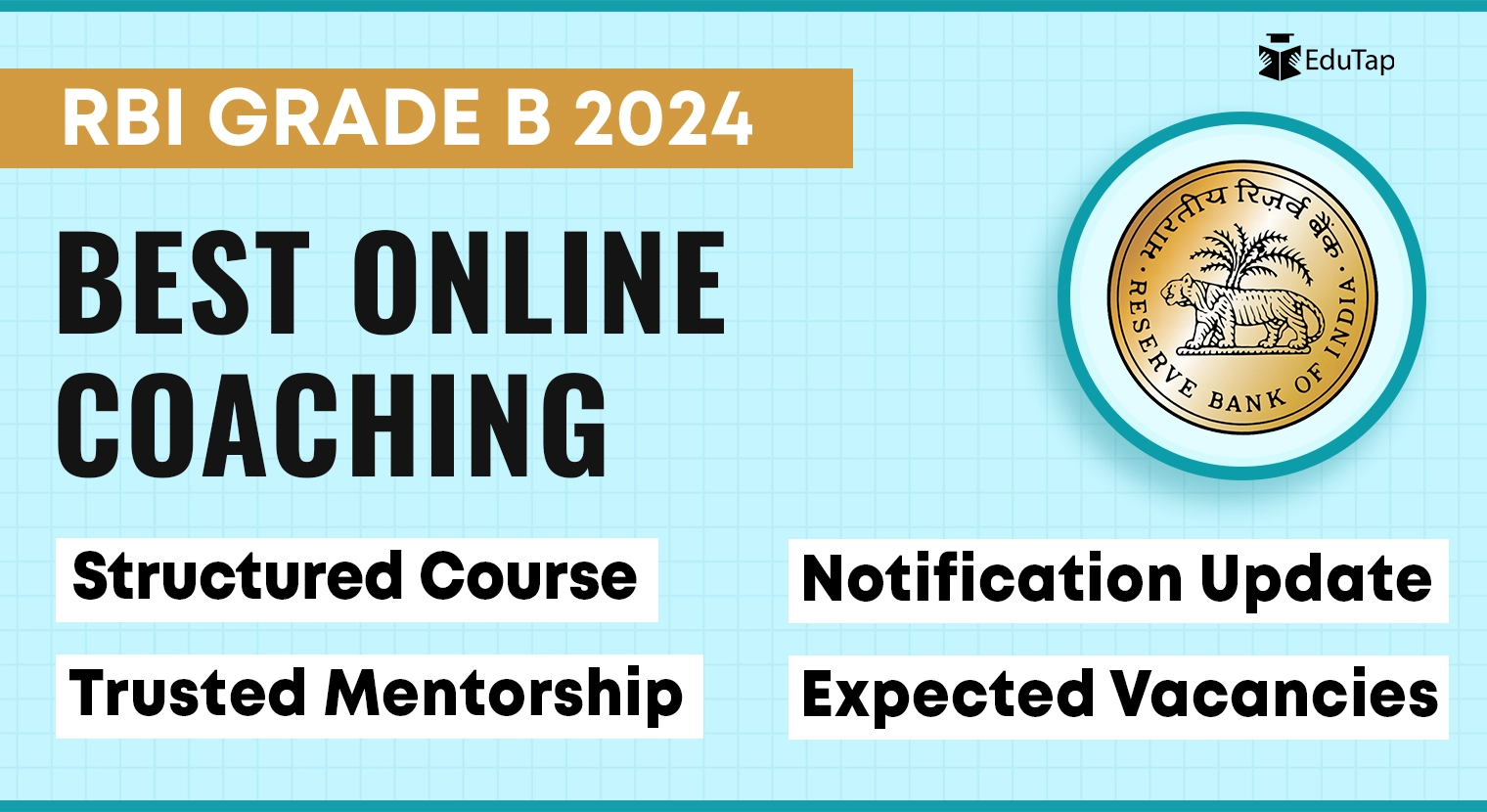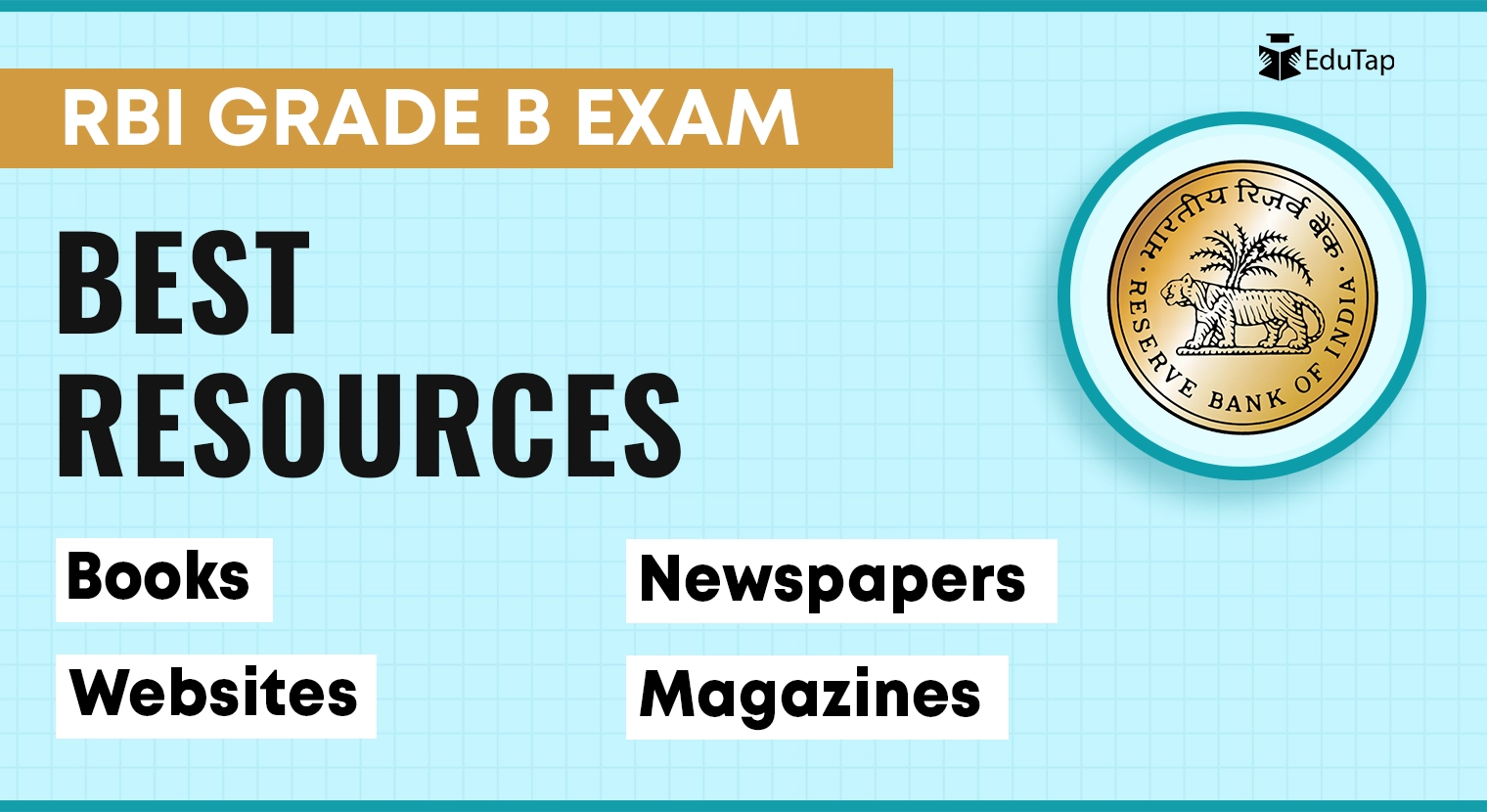Meet Bhavana P J, an inspiration to all RBI Grade B aspirants. Her journey exemplifies dedication, smart work, and a well-defined approach. With a non-finance background and limited preparation time, she defied the odds and achieved her dream of becoming an RBI Grade B officer.
In this article, Ms. Bhavana P J shares her RBI Grade B journey and explains her preparation strategy, resources, and important tips for the aspirants.
Background
- Completed my schooling in Shivamogga, Karnataka
- Graduated with a Bachelor of Science Degree in Botany, Microbiology, and Biochemistry from Yuvaraja’s College, University of Mysore
- Prepared for the UPSC CSE exam
- Cracked RRB exam
- Was working in RRB at the time I cracked the RBI Grade B exam

Brief Introduction
I hail from Shivamogga, Karnataka, where I completed my schooling. After my 12th, I graduated (in 2020) with a Bachelor of Science Degree in Botany, Microbiology, and Biochemistry from Yuvaraja’s College, University of Mysore.
Initially, I decided to pursue the UPSC CSE exam and even enrolled in coaching for a year. However, I later broadened my horizons to explore other promising career paths and the RBI Grade B exam was one of them. However, I considered cracking the RRB exam as an intermediate step.
I believed that working in a bank would provide valuable experience and a realistic perspective for my RBI interview. It would solidify my aspirations of becoming a central banker. With this goal in mind, I took the RRB exam and cracked it.
My RBI Grade B Journey
My awareness of the RBI Grade B exam itself came quite late. Like many others, I had preconceived notions about RBI during my college days. I believed it was a domain reserved for those with advanced economics degrees (MA, PhD) or veteran bankers from prominent institutions. The idea that the RBI recruits generalists never crossed my mind.
When I learned about the RBI Grade B exam, I did my research and discovered how well RBI explained the job roles of a Grade B officer on their website. Their descriptions sparked a genuine interest in pursuing a career there. The prospect of a corporate environment within the government sector was rare, and that aspect significantly attracted me.
Unfortunately, I learned about the RBI exam relatively late. By then, I was already preparing for the RRB exam, primarily to gain experience with the banking exam format. Clearing the RRB exam presented a dilemma. Should I join, continue with UPSC CSE preparation, or seriously prepare for the RBI Grade B exam?
Ultimately, I decided to focus on studying for the RBI Grade B Phase 1 and 2 exams, areas where I felt confident. However, the interview aspect remained a concern. I saw the RRB experience as a valuable opportunity to make a good impression during an interview, especially considering I was a candidate with non-finance background.
Working at the RRB presented a way to demonstrate my genuine interest in the RBI. The RRB experience served as a sort of model question paper for me for the interview. Thankfully, everything aligned as planned, and I cracked the RBI Grade B exam in my first attempt.
I saw the RRB experience as a valuable opportunity to make a good impression during an interview, especially considering I was a candidate with non-finance background.
How I Managed Time for Both Work and RBI Grade B Preparation
Time feels like a precious commodity, especially when you’re working. We often look back and regret wasted hours. As a working candidate, even though you want to work hard, time constraints become a reality.
That’s where smart work becomes crucial. While building a strong foundation requires dedicated effort, I was fortunate to have a year of UPSC preparation. This provided a solid base of knowledge. I wasn’t starting from scratch; I had a grasp of various topics. That’s the advantage you gain from UPSC coaching.
My UPSC preparation helped me a lot in my RBI Grade B preparation.
EduTap’s’s Help in My RBI Grade B Journey
Moving on to the RBI Grade B specifically, I started studying solely for this exam after joining my job. Time was limited, which is when EduTap came into the picture. Interestingly, I initially learned about the RBI Grade B exam itself from EduTap’s resources.
The testimonials from past toppers were very convincing. Seeing so many successful candidates gave me confidence in EduTap’s content and materials quality. Based on this belief, I purchased their course. I knew that with my limited time, I wouldn’t be able to create comprehensive notes from scratch, so sticking to EduTap’s provided materials made sense.
The testimonials from past toppers further solidified this decision. I was confident that focusing solely on these materials would be the most efficient approach. So, I began with EduTap study material. Initially, I aimed to study the notes and watch the videos.
Seeing so many successful candidates gave me confidence in EduTap’s content and materials quality.
Unexpected Success: My Journey from RBI Assistant to Grade B
However, adjusting to a new job takes time, and I wasn’t able to fully cover the syllabus as planned. This year was initially intended as a trial run for the RBI Grade B. I envisioned a more serious attempt next year, but things turned out differently.
My initial goal was to crack the RBI Assistant exam. Clearing that would allow me to join the organization, making the RBI Grade B more accessible later. However, I couldn’t clear the RBI Assistant Prelims itself. While aiming for the RBI Assistants Prelims, I was also studying for the Mains, which strongly focuses on Reasoning, Quant, English, and GA, similar to the RBI Grade B Prelims.
This overlap actually helped shift some of my preparation towards the RBI Grade B. Clearing it in the first attempt wasn’t my expectation. However, the knowledge gained from the EduTap materials proved invaluable during my limited study time.
I managed to study during evenings and holidays without taking additional leave from work. The key was having well-structured content readily available. Starting from scratch while working is difficult, but with everything ready given to you by EduTap, success becomes achievable.
Starting from scratch while working is difficult, but with everything ready given to you by EduTap, success becomes achievable.

My RBI Grade B Phase 1 Preparation Strategy
Here is the strategy I followed to prepare for the RBI Grade B Phase 1 exam:
My RBI Grade B GA Strategy
My approach to General Awareness (GA) was a bit different. While many focus on memorizing facts, I always believed that understanding the concepts would naturally lead to remembering the details. So, I never crammed facts, figures, or specific numbers. Instead, I aimed for a general understanding of the concepts.
Limited time was a challenge, especially during the RBI Grade B Prelims when I was also undergoing training at the bank. So, I avoided reading newspapers and totally relied on EduTap’s news summaries. Initially, I followed EduTap magazine to clear the concepts. Later, I used their concise pocket PDFs for revision.
I believe that everyone is at the same level in GA, so even if I remember one minute detail, the other person will remember the other. So it’s not something everyone knows everything about. You don’t have to learn everything. You just have to be better than the competition.
Therefore, I skimmed the RBI website just to stay updated on commonly known information. Additionally, I reviewed EduTap’s magazine and other institute magazines to catch any news I might have missed. For current events, I followed the Beyond news specifically to understand the broader concepts and ongoing issues.
Initially, I followed EduTap magazine to clear the concepts. Later, I used their concise pocket PDFs for revision.
My RBI Grade B GA Revision Strategy
Revision is absolutely crucial. During any exam, we often encounter questions where we recognize having studied the topic but struggle to recall the answer. This is where revision comes in. The number of revisions needed varies from person to person. Some people require multiple rounds, while others retain information quickly.
Regardless, I believe the focus shouldn’t be on intricate details. Having strong basics is more important than learning new topics. My mantra for GA preparation is a thorough revision of the core concepts, along with surrounding details.
Having strong basics is more important than learning new topics.
How Many Months of Current Affairs I Prepared for?
For General Awareness, I primarily focused on current affairs for the last six months before the exam. However, I didn’t believe in rigidly focusing on a specific timeframe. Sometimes, questions can be linked to events from two years ago.
Specifically for government schemes, I followed Deeksha Ma’am’s video series on the EduTap YouTube channel. Her 10 to 15-minute videos resonated with me because she not only just explained newly announced schemes but also revisited those that had appeared in the news over the past two or three years.
This approach was crucial because the examiners consider current events and news trends when creating questions. They’re not solely focused on a specific timeframe, like six months or a year. Understanding the examiner’s perspective is vital when preparing for GA.
For General Awareness, I primarily focused on current affairs for the last six months before the exam.
My RBI Grade B Quant and Reasoning Strategy
Quant and Reasoning were quite challenging for me. The RBI Grade B exam’s Quant and Reasoning sections felt quite different from what I encountered in other banking exams. I managed to just barely clear the sectional cut-off for these sections, so I consider myself fortunate.
However, Quant and Reasoning are all about practice. I didn’t specifically use any new resources for them because my foundation was already strong from preparing for banking exams. I simply focused on getting enough marks in these sections to clear their sectional cut-off and move forward.
Quant and Reasoning were quite challenging for me, and I barely cleared their sectional cut-off.
My RBI Grade B English Strategy
I didn’t dedicate any specific study time to prepare for the English subject. I’m generally comfortable with the language. But I recommend the Wren and Martin book for those who want to improve their grammar. It provides a strong foundation in grammar concepts.
I’m generally comfortable with the language, so I didn’t dedicate any specific study time to English.
How Much Time Did I Invest in Preparing for the RBI Grade B exam?
While my initial preparation began back in February, work commitments caused some delays. Ultimately, I didn’t have the luxury of a year or two of dedicated study. However, I was able to prepare alongside my job by strategically utilizing the gaps in the exam schedule itself. This approach proved successful thanks to the highly focused EduTap content I used, which ultimately proved invaluable during the RBI Grade B exam.
In less than 3-4 months, I was able to cover the RBI Grade B Phases 1 and 2.
My RBI Grade B Mistake
I made a mistake after the RBI Grade B Prelims. Since I wasn’t confident about clearing it, I took a week’s break and later restarted studying. However, when the results came out, I was shocked to see that I had cleared the RBI Grade B Phase 1. I felt a lot of regret because I had lost a week of valuable study time, and only 15 days remained before Phase 2.
I waited for the RBI Grade B Phase 1 result and then started my preparation for Phase 2.
Learning from My Mistake
Here’s a tip for future aspirants: don’t take a break based on the assumption you won’t clear a phase (including Phase 1 and Phase 2). Continue studying with the mindset that you might clear, and you can always relax after the results are declared. Losing even a few days can feel like a lot of wasted time when you’re facing a tight deadline. Therefore, keep studying diligently until the results are out, then reward yourself with a break.
Don’t take a break based on the assumption that you won’t clear a phase; continue preparing for the next phase.
My RBI Grade B Phase 2 Preparation Strategy
Here is the strategy I followed to prepare for the RBI Grade B Phase 2 exam:
My RBI Grade B Finance and Management Strategy
Everyone recommended starting with Finance and Management for the RBI Grade B Phase 2. Management was entirely new to me, but I had a basic understanding of Finance from the Economics I studied during UPSC CSE preparation (just the fundamentals).
I primarily relied on EduTap for Finance and Management. It’s important to mention this because, after the Phase 1 results, I only had 18 days left. One day was spent familiarizing myself with the English Descriptive pattern, and two days were dedicated to planning what to study with only 15 days remaining.
I evaluated everything offered by EduTap—video courses, summary notes, and concept notes. Completing everything in 15 days was unrealistic because I initially hadn’t expected to clear RBI Grade B Phase 1.
What truly attracted me to EduTap was their mind maps. They were perfect for revision and a game-changer. Since I only needed a surface-level understanding, I skimmed everything using the mind maps, ensuring I wouldn’t miss any topics.
For Finance, having some basic knowledge, I focused solely on the mind maps for the RBI Grade B Mains section. Management, however, went over my head initially. So, I sought help from my brother, who had Public Administration as his optional subject. He helped explain Management concepts and how various theories are applied in practice. After that, revisiting EduTap’s mind maps made sense.
I primarily relied on EduTap for FM. Their mind maps were perfect for revision.
My RBI Grade B FM Current Affairs Strategy
For current affairs, I followed EduTap’s study material, which proved very helpful. Understanding schemes requires in-depth knowledge, not a superficial understanding. You can’t grasp the RBI announcements or notifications in a single line. I also watched EduTap’s 10-15 minute videos on reports, schemes, and PIB news to understand them in detail.
I didn’t refer to any additional resources; the videos were sufficient to prepare for the current affairs. Thanks to the material I studied, I could answer most of the Finance and Management questions.
I watched EduTap’s 10-15 minute videos on reports, schemes, and PIB news to understand them in detail.
My RBI Grade B ESI Strategy
My UPSC preparation largely covered the ESI portion. Since I already had a general understanding of the content and overall structure, I solely relied on EduTap’s mind maps for ESI preparation.
It might sound surprising that just mind maps are sufficient for ESI preparation, but due to time constraints, I had to follow this strategy. With a limited study window, I could only focus on revising materials that were quick to scan. Summary notes weren’t feasible as they wouldn’t leave enough time for revision.
I solely relied on EduTap’s mind maps for ESI preparation and referred to EduTap’s current affairs videos for specific facts and figures.
Importance of PYQs and EduTap’s Mind Maps
I used EduTap’s mind maps and analyzed the previous year’s questions. Whenever I encountered a new topic while reviewing the mind maps, I would also refer to the previous year’s questions related to that topic. This allowed me to gauge the depth of content required and the types of questions typically asked.
If any topic required additional study, such as specific subtopics or in-depth details, I would read those points from concept notes or summary sheets for further review. This iterative process helped me efficiently prepare for the ESI paper.
For the ESI descriptive portion, my basic understanding from UPSC came in handy for answer framing. However, I referred to EduTap’s current affairs videos and government scheme-related content for specific facts and figures.
I used EduTap’s mind maps and analyzed the previous year’s questions.

My RBI Grade B Descriptive Writing Strategy
Due to time constraints, I didn’t dedicate any additional practice to typing for the RBI Grade B Phase 2 descriptive. I figured typing speed was a common factor as nobody was a professional typist there. Everyone has basic typing skills. Therefore, my goal was just to reach the word limit with a plus or minus of 50 words. Writing a full answer for one question and a shorter answer (100-200 words) for another would be sufficient to score good marks.
In my opinion, maintaining an average word count across both questions would make a better impression. Word limit plays a vital role in creating a first impression for the examiners. The length of your answer indicates how much content you have to offer. Writing too short could create a negative impression during evaluation.
So, I was very particular about the word limit for each question and even the order in which I answered them. I prioritized questions with content and facts I knew well to make that initial strong impression. The second question could be managed with average writing. The key takeaway is to consider the examiner’s perspective during the exam.
For the descriptive section, I didn’t take any mock tests or practice typing beforehand. This was my first time typing for an actual exam, and my hands actually went numb during the second session from the extended typing.
Due to time constraints, I didn’t dedicate any additional practice to typing for the RBI Grade B Phase 2 descriptive.
The Framework of Writing Descriptive Answers
Content knowledge is important for descriptive answers, but so is addressing current trends. There is no single “ideal” format—paragraphs, bullet points, or a combination—it depends on the question’s demands. If the question explicitly asks for a list (e.g., five or ten points), bullet points are appropriate.
However, bullet points will not be sufficient for opinion-based questions. Analyzing a situation or expressing an opinion requires well-developed paragraphs. You can then incorporate bullet points within those paragraphs to highlight different aspects.
Presentation matters significantly because it should attract the examiner’s attention and convince them to award marks. I always approached descriptive answers by considering the examiner’s perspective. For us, it’s just one paper, but they’re evaluating hundreds. Standing out can make a difference and help you earn those crucial extra marks required to clear the exam.
I always approached descriptive answers by considering the examiner’s perspective.
My RBI Grade B Descriptive English Strategy
Due to limited time, I decided not to dedicate specific preparation for the RBI Grade B Phase 2 Descriptive English section. However, even with more time, I wouldn’t have practiced English extensively as I’m generally comfortable with the language.
Instead, I watched a couple of videos by Narveer Sir on the EduTap YouTube channel. These videos proved helpful in understanding how to approach different question types, such as precis, essay, and comprehension, and how to stick to the word limits.
I spent a day strategizing the order in which I would answer the questions. I decided to leave the essay for the last, allowing myself maximum time to write a strong response. Overall, Descriptive English wasn’t a major hurdle for me. However, it’s equally important because it carries 100 marks.
Often, candidates neglect English preparation while focusing on ESI and FM. It’s crucial to remember that English carries equal weight and requires attention. During the exam, I focused on avoiding spelling and grammar errors. It’s not just about the content of your answer, but also the quality of your English. Using clear, concise language with proper vocabulary and grammar can make a significant difference in your English score.
I watched a couple of videos by Narveer Sir on the EduTap YouTube channel.
My RBI Grade B Mock Interview Experience
I participated in two mock RBI Grade B interviews—one from EduTap and another from a different institute. Initially, I was hesitant to take mock interviews because I started preparing for the interview only after the RBI Grade B Mains exam. I didn’t want to repeat the mistake I made after the Prelims, where negativity about a bad mock test impacted my revision for the Mains. However, I decided to push those concerns aside and participate in the mocks.
The mock interviews turned out to be very beneficial. Interestingly, several of the questions in the actual interview were repeated from the mocks. For the interview, I heavily focused on practicing answers for my biodata section. I also focused specifically on EduTap’s Finance and News section as that’s the most relevant current affairs knowledge for the RBI interview.
Therefore, I devoted most of my time to preparing my biodata. I wanted to incorporate key points that would prompt questions from the interviewers. By providing those key points, you’re giving them a framework for the interview. Without prompts in your biodata, they might just ask general economic questions, and it’s not possible to answer everything when we give them a blank canvas to ask questions.
I participated in two RBI Grade B mock interviews—one from EduTap and another from a different institute.
My Actual RBI Grade B Interview Experience
The interview panel consisted of six members: two females and four males. My interview was held in Chennai in August, so I had limited preparation time. I primarily focused on revising my biodata and anticipating questions about my HR background and experience with the RRB, where I was working at the time of the interview. This included in-depth preparation for both RRB and RBI-related HR questions.
For current affairs, I mainly referenced the RBI website and listened to speeches by RBI officials. For the RRB portion, I wanted to be ready for any questions they might ask about the organization. It’s important to answer confidently and accurately about yourself, your current employer, and the organization you’re aspiring to join.
One key tip: never speak negatively about your current employer, even if it has flaws. Since I worked at the RRB, I anticipated questions about their purpose, potential IPO pros and cons, etc., and these questions did indeed come up in the actual interview.
I primarily focused on revising my biodata and anticipating questions about my HR background and experience with the RRB.
How My Interview Started?
The interview started with the chairman introducing himself and the panel. This meant I didn’t need to give a self-introduction. However, during his introduction, he highlighted my academic achievements, particularly my graduation grades.
He asked me to give a three-minute overview of Non-Banking Financial Companies (NBFCs) and their regulatory framework. This was a clear test of my understanding of the financial sector beyond just academics.
Following that, they asked questions about my extracurricular activities listed in my biodata. This is another important area, as they’ll often delve into those details. I mentioned playing badminton and participating in folk dances during school, and they asked follow-up questions to gauge my personality and interests.
The chairman asked me to give a three-minute overview of Non-Banking Financial Companies (NBFCs) and their regulatory framework.
Importance of Listing Unique Hobby
My listed hobby of curating terrariums was unique, and I knew it would be a conversation starter. Having a unique hobby helps portray yourself as a well-rounded individual. Overall, I wanted to create a positive impression of being academically strong, involved in extracurriculars, and adaptable to new challenges. The biodata content I had prepared served me well, with questions largely following the areas I anticipated.
My listed hobby of curating terrariums was unique and a conversation starter.
Always Be Prepared for Some Unexpected Questions
There were some unexpected bouncer questions, like one about justifying my decision not to pursue a Master’s degree in Microbiology despite my strong academic performance. I explained that being a 2020 graduate during COVID-19 presented challenges for practical laboratory experience necessary for a successful research career. I satisfied them with a genuine explanation.
Another unexpected question was why I didn’t pursue a Master’s in Economics if I was interested in the RBI. I responded by stating that I lacked the theoretical knowledge required for the RBI role and joined the RRB to gain practical banking experience at the grassroots level, ultimately aiming to become a central banker. They seemed convinced by this answer.
This experience highlights the importance of being prepared to justify any gaps, changes, or deviations in your academic or professional path. Present realistic explanations with confidence. While answering some current affairs questions might be acceptable, prioritize those related to your field of work (e.g., RRB) to showcase your knowledge base.
By focusing on clear justifications, strategic question selection (which to answer in detail and potentially concede with a “don’t know”), and maintaining control of the interview flow, you can navigate even challenging situations and leave a positive impression on the panel.
They asked me, “Why didn’t I pursue a Master’s degree in Microbiology despite my strong academic performance.”
RBI Grade B Preparation Tips
While hard work is crucial during RBI Grade B preparation, focus on smart work for maximum efficiency once the exam starts. Plan your approach based on your strengths and weaknesses. Start planning early for the interview and utilize free mock interviews to assess your performance and identify areas for improvement.
Cultivate some hobbies or extracurricular activities to include in your biodata. This showcases your versatility and eagerness to learn, qualities the RBI values as a knowledge-based organization. If you don’t currently have hobbies, consider starting some now alongside your RBI Grade B exam preparation. These activities can be valuable assets for your interview section.
Remember, content knowledge is readily available for the RBI Grade B Prelims and Mains; focus on diligent practicing and revision.

Here is a video in which Ms. Bhavana P J explains her RBI Grade B preparation strategy.
Conclusion
Bhavana’s successful journey serves as a valuable guide for aspiring RBI Grade B officers. She proved that by combining hard work, a well-defined strategy, and the right resources, success is achievable even with a non-finance background and limited time for preparation.





